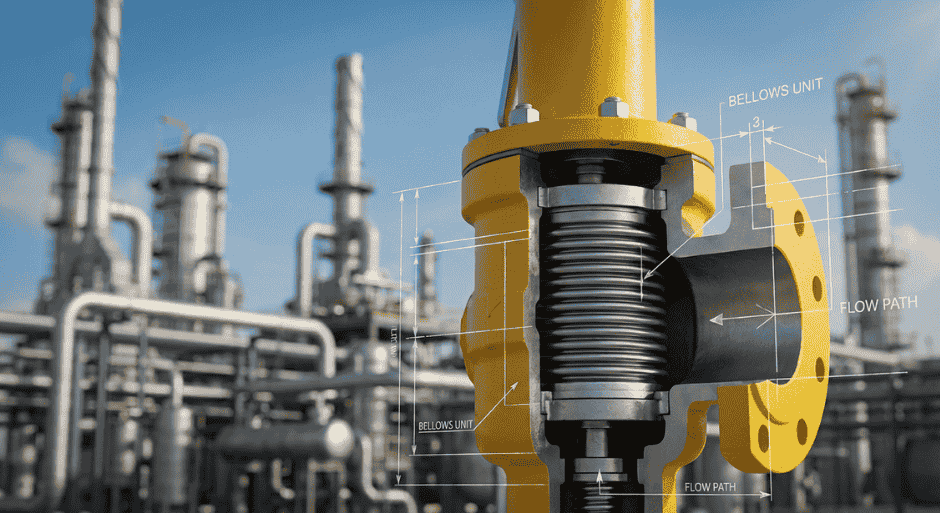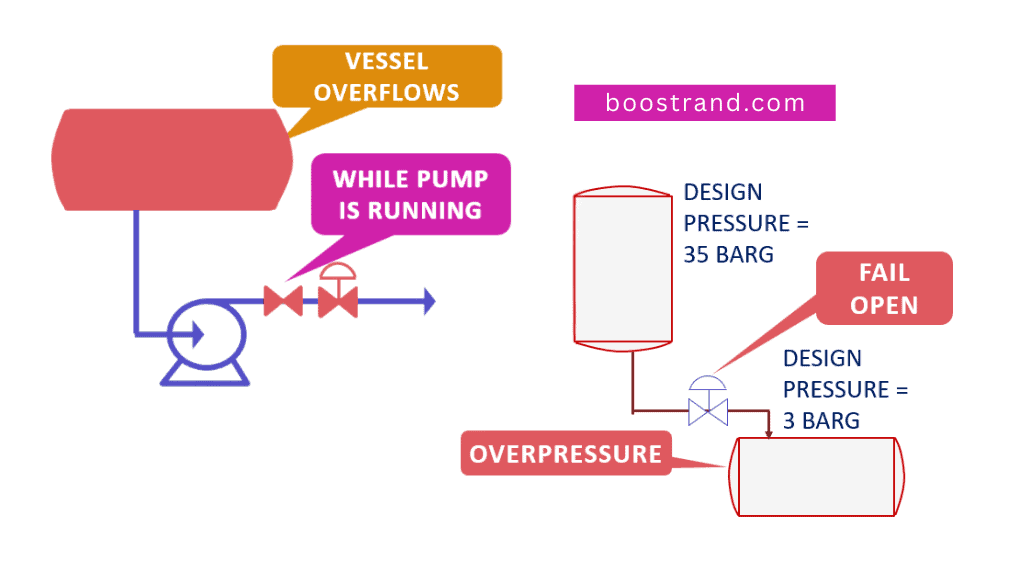When storage tanks are mentioned, most people think about typical fixed storage tanks. However, things are not that simple. The selection of a storage tank type is a critical process that involves careful consideration of various factors to ensure safe, efficient, and cost-effective storage of fluids.
Several key factors influence tank selection, such as fluid vapor pressure, tank pressure and temperature, fluid contamination and need for vapor recovery. In this article, we shall explore these factors in more detail and the tank types typically used to address storage requirements.
Factors Affecting the Selection and Design of Storage Tanks
Fluid Vapor Pressure
The vapor pressure of the stored fluid is a crucial factor in determining the type of storage tank required. This is because vapor pressure would affect the vaporization of the stored liquid. If we are storing volatile liquid at atmospheric pressure, this will lead to large vapor emissions into the atmosphere.
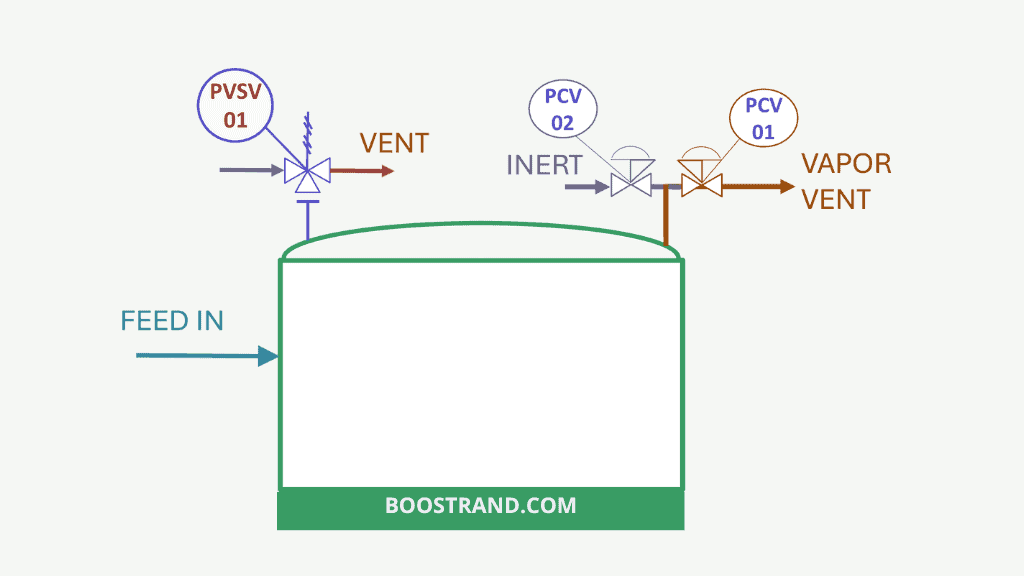
So are vapor emissions that important concern?
Well, it mainly depends on the nature of the fluid. If we are dealing with an environment-friendly fluid, this won’t be a concern as we can just vent the vapor into the atmosphere. This can be the case for storage of water for example.
However, this is not the case with most process fluids or with hydrocarbons. Continuous vapor emissions to the atmosphere highly impact the environment. In addition, they cause losses of a valuable fluid which is considered as a product in most cases. If the tank is not well-vented, pressure will rise, leading to overpressure.
So how do we choose the tank type based on vapor pressure? This shall depend on the value of the vapor pressure itself. In general, US Environmental Protection Agency puts basic rules for the type of storage tank used and the control of vapor emissions with respect to the fluid vapor pressure:
So here, we see that based on EPA regulations, we have 3 main categories:
- Vapor Pressure < 1.5 psia: Here the vapor emissions are low, so a fixed roof tank can be used without worrying about emissions
- 1.5 psia < Vapor Pressure < 11.1 psia: where vapor emissions start to be significant, this would mean that we shall need to minimize them as much as possible. This can be done using floating roof tanks. Using floating roof tanks can be a decent solution. Floating roof tanks are atmospheric storage tanks designed to minimize vapor space and reduce evaporation losses of volatile liquids. The roof of the tank floats on the surface of the stored liquid, rising and falling with the liquid level.
- Vapor Pressure > 11.1 psia: Here the vapor emissions start to be too high, which shall mean an environmental impact in addition to product losses. Here we shall need to recover these vapors or safely dispose of them without affecting the environment.
So here, based on the vapor pressure of the fluid, this shall push us to choose the best approach for our storage.
Shall we use floating roof tanks? This would be the best solution if the vapor pressure is within the allowable range provided by EPA. This would avoid using more complex designs.
Floating roof tanks are atmospheric storage tanks designed to minimize vapor space and reduce evaporation losses of volatile liquids. The roof of the tank floats on the surface of the stored liquid, rising and falling with the liquid level. A floating roof tank keeps the roof in contact with the liquid in the tank, thereby minimizing vapor space and preventing excessive vapor pressure buildup.
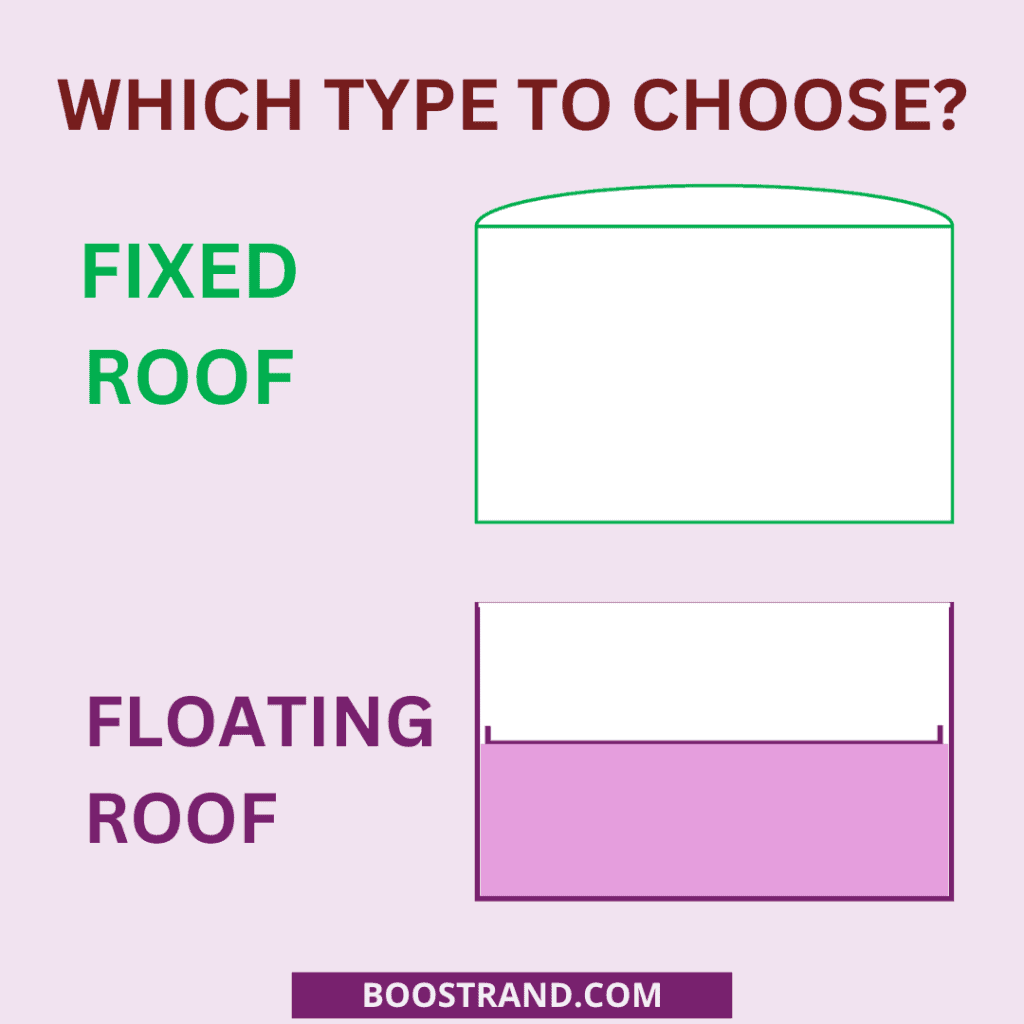
Otherwise, shall we increase tank pressure to reduce the emissions?
Or maybe we need to decrease the storage temperature to a cryogenic temperature?
What about vapor recovery? Do we need a vapor recovery system or we can just rely on the flare to get rid of these vapors?
The answers to these questions depend on several factors, and each of them shall contribute to our final selection of the tank. So let’s continue our journey discovering other factors.
Storage Pressure
So we may need to consider storing the fluid at some pressure. This can happen for several reasons:
- Reducing Vapor Emissions: Higher operating pressure suppresses vaporization of the stored liquid. For example, with hexane, API 2000 suggests that increasing the tank pressure by just 0.6 kPa (0.087 psi) above the boiling point reduces vaporization by 0.4%. This shall help losing valuable hexane and reduce vapor recovery system capacity.
- Storage of materials near their boiling point: A famous example is LPG storage. In these cases, the tank pressure helps keep the material in liquid form. However, weather changes in temperature or humidity can still cause substantial vaporization or condensation in such tanks storing material close to the boiling point.
- Flare backpressure: If no vapor recovery is considered and vapors are vented to flare, then the tank should be designed to operate at normal flare backpressure and withstand the maximum flare backpressure.
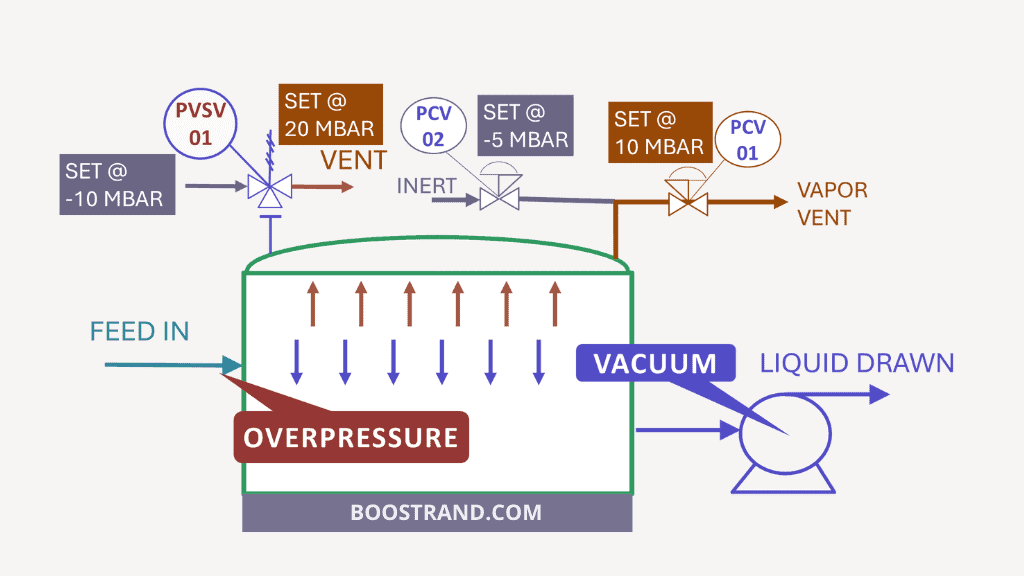
Photo of Refrigerated tank with pressure controller
The storage pressure is a critical factor in choosing the tank type. This shall depend on the design pressure of the tank as below:
Tank Design pressure < 2.5 psig
- Tank can be designed based on API 650 requirements
- Simple design, easy construction, and lower cost compared to other tank types.
- Suitable for storing a wide range of liquids with low vapor pressures.
2.5 psig < Design pressure < 15 psig
- Tank can be designed based on API 620 requirements.
- Construction of API 620 tanks involves thicker shell plates, reinforced nozzles, and additional design considerations for low-temperature services.
- API 620 tanks offer the advantage of handling higher vapor pressures and storing a wider range of products compared to atmospheric tanks. However, they are more complex and expensive to construct and operate compared to API 650 tanks.
Design pressure > 15 psig
- Pressure vessels or other types to be used.
- Types can be spherical tanks or horizontal cylindrical tanks, which are even more expensive and have their construction complexities.
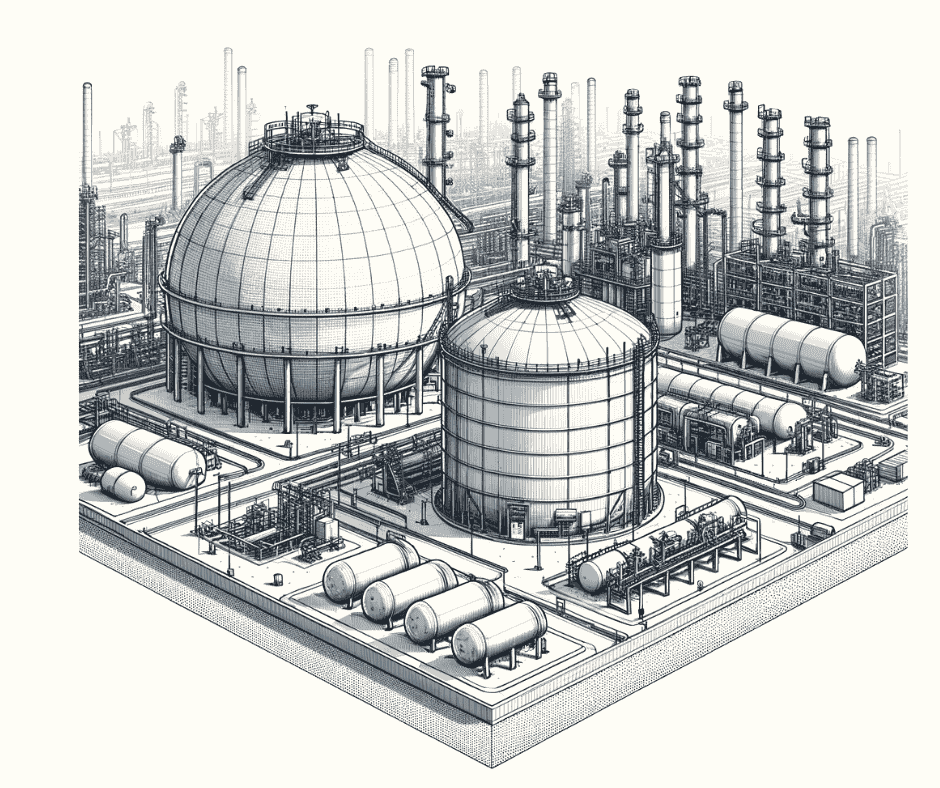
Storage Temperature
When we decide to store a fluid that is in vapor state at ambient temperature, we usually have two options:
- High pressure Storage: Which shall lead to a change in tank type as explained above.
- Low Temperature Storage: This shall mean that we shall store the fluid at a cryogenic temperature, which has its complications as well.
So what are the considerations that we should take when storing the fluid at a low temperature? Let’s see.
Need for Insulation
When we store the fluid at a low temperature, we shall need to reduce its exposure to ambient temperature as much as possible. This means heavy insulation requirements. Single-wall insulated or double-wall (tank within a tank) configurations are typically used for this service.
Vapor Losses and need for vapor recovery
Even with Insulation being installed, there is still heat gain will cause vaporization of the stored liquid, increasing the vapor pressure. This boil-off vapor formed is a part of a valuable product in addition to be harmful to the environment. That’s why vapor recovery is typically needed here.
Pressure Control
While these tanks operate at low pressures, changes in ambient conditions can still cause substantial vaporization or condensation for cryogenic liquids stored close to their boiling point. The tank design needs to account for venting requirements during operations like initial cooldown and filling.
Process Engineering Masterclass
Become a Professional Process Engineer, discover process engineering career, role, activities and common practices with access to most of the courses here.
Material of Construction
This is a very crucial factor as material of construction can severely affect the cost of the tank. The extremely low temperatures can make carbon steel brittle. Special low-temperature materials like 9% nickel steel, stainless steels or aluminum may be required for the inner tank. Insulation and seal materials also need to be suitable for cryogenic conditions.
Foundation
Cryogenic tanks are very sensitive to differential settlement and movement. The foundation design needs to account for the cold temperatures, tank movements due to cooldown and the heavy liquid load. Heating or special foundation designs may be needed to prevent frost heave in the soil.
Low Temperature Storage Tank Type : Single Wall or Double Wall?
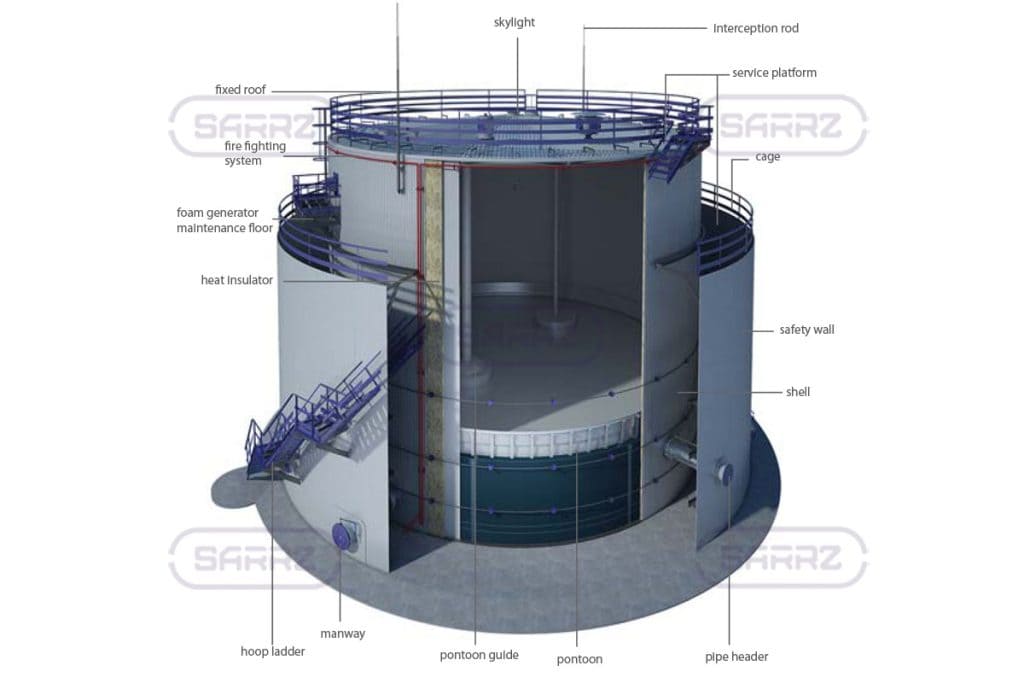
Depending on the fluid service, physical properties, volume, insulation requirements, and the consequences of any leakage, we shall need to choose the tank insulation type.
Shall it be a single wall or double wall tank?
Single-wall insulated tanks, on the other hand, have the insulation and vapor barrier applied directly to the outside of the single tank wall. These are simpler in construction compared to double-wall tanks.
A double-wall tank has an inner tank that contains the refrigerated liquid, and an outer tank that encloses an insulation space around the inner tank. The outer tank is not required to contain the product, but provides the insulation space . The insulation space is maintained at a low positive pressure and must be vapor-tight.
In a double-wall tank, the materials, design and testing requirements differ between the inner and outer tanks due to their different functions. The inner tank is designed for the internal pressure, liquid head, insulation pressure, and thermal stresses. The outer tank is designed for the pressure in the insulation space.
Fluid Contamination and Sealing
The purity and quality requirements of the stored fluid can significantly impact the selection of the storage tank type and the need for special sealing arrangements.
Some fluids are sensitive to contamination by air, moisture, or other external substances. In such cases, it is crucial to choose a tank design that minimizes the ingress of contaminants and ensures a well-sealed storage environment.
For fluids that are prone to oxidation or degradation when exposed to air, tanks with inert gas blanketing or nitrogen padding systems may be necessary. These systems maintain a positive pressure of inert gas within the tank vapor space, preventing the ingress of air and reducing the risk of contamination.
Effect of Floating Roof Tank Type and Sealing Requirements
But the real concern comes when we are dealing with floating roof tanks. This is because the sealing between the tank roof and the atmosphere would be a real issue.
The floating roof maintains contact with the liquid surface, effectively sealing the tank and preventing the formation of a large vapor space. However, and in order for the roof to move upwards and downwards, there is always a clearance between the floating roof and the tank shell. If this clearance isn’t well sealed, it shall allow vapor emissions to pass through it. In addition, it shall let rainwater or sand or other weather conditions affect the tank and the stored fluid quality.
Here comes the importance of floating roof seal!
The choice of sealing system and tank design depends on the specific fluid properties, storage conditions, and the required level of contamination prevention.
Floating roof seals, such as mechanical shoe seals or liquid-mounted seals, are used to close the gap between the floating roof and the tank shell, further minimizing vapor emissions. In some cases, double-sealed or full-contact floating roofs may be required to provide an even higher level of sealing and emission control.

Using Internal Floating Roof Tanks
External floating roof tanks have some disadvantages. They are more susceptible to rainwater accumulation on the roof, which can lead to corrosion and contamination of the stored product. Additionally, the exposed roof is vulnerable to damage from weather conditions, such as high winds or heavy snowfall.
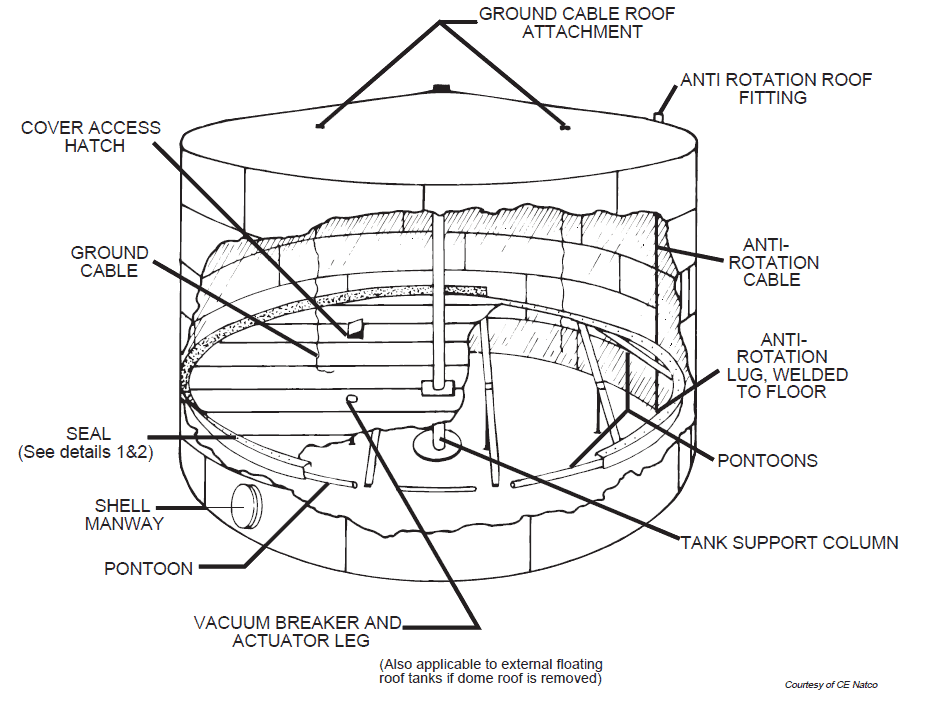
When sealing is main concern, we may think about internal floating roof tanks.
Internal floating roof (IFR) tanks combine the features of a fixed roof tank and a floating roof tank. They have a permanent fixed roof above the floating roof, which provides protection from the elements and additional vapor containment while still minimizing vapor emissions using the internal roof.
The internal floating roof, similar to the EFR, floats on the surface of the liquid and rises and falls with the liquid level. The fixed roof above the floating roof helps to further reduce evaporation losses and vapor emissions.
IFR tanks are suitable for storing volatile liquids that require a higher level of emission control compared to EFR tanks. The fixed roof provides better protection against rainwater ingress and minimizes the risk of product contamination.
However, IFR tanks are more complex and expensive to construct compared to EFR tanks due to the additional fixed roof structure. They also require more frequent inspection and maintenance to ensure the integrity of the floating roof and seals.
Tanks with Vapor Recovery
As highlighted above, Controlling vapor emissions from storage tanks is an important environmental consideration, particularly for tanks storing volatile organic compounds (VOCs) or other regulated substances. That’s why the EPA stated the requirement for a vapor recovery system or its equivalent in case of excessive fluid vapor pressure.
Vapor recovery systems typically consist of a vapor collection network, which collects the vapors from the tank and associated equipment, such as pumps and valves. The collected vapors are then processed using various technologies, such as adsorption, absorption, condensation, or membrane separation, to recover the valuable components or destroy the harmful emissions. The recovered vapors can be either reused in the process, such as blending them back into the stored product, or sent to a vapor destruction unit, such as a flare or incinerator, for safe disposal.
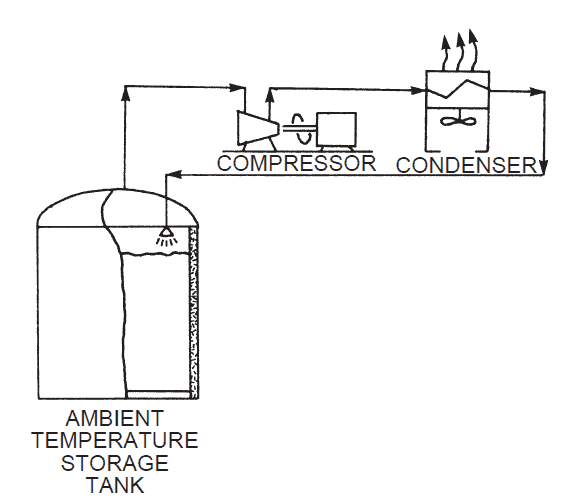
In addition to the significant reduction in vapor emissions, which helps to minimize the environmental impact and comply with regulatory requirements, vapor recovery also helps to conserve valuable product and reduce the risk of fire or explosion hazards associated with the accumulation of flammable vapors.
However, vapor recovery systems add complexity and cost to the storage tank design and operation. They require additional equipment, such as compressors, condensers, and control systems, which increase the initial capital investment and ongoing maintenance costs.
Conclusion
In conclusion, the selection and design of storage tanks involve careful consideration of various factors, including fluid properties, storage requirements, safety and environmental regulations, and operational considerations. Each type of storage tank has its own advantages, disadvantages, and specific applications, and the choice depends on the unique needs of each storage facility.
Fixed roof tanks, such as API 650 and dome roof tanks, are suitable for storing non-volatile or low-volatility liquids at atmospheric pressure. Floating roof tanks, both external and internal, are effective in reducing vapor emissions and evaporation losses for volatile liquids. API 620 tanks are designed for low-pressure storage of a wide range of products, including refrigerated liquids and gases.
Spherical tanks are used for storing high-pressure liquids or gases, while low-temperature tanks are specialized for storing cryogenic liquids. Tanks with vapor recovery systems are employed to capture and control vapor emissions, meeting environmental regulations and conserving valuable products.
The design and construction of storage tanks must adhere to the applicable codes, standards, and regulations, such as API 650, API 620, and local environmental and safety requirements. Proper selection, design, and operation of storage tanks are essential for ensuring the safe, efficient, and environmentally responsible storage of various liquids and gases in industrial facilities.
Start your Career
Access Process Engineering Introduction Course
Share this:
[…] creation of a PFD is typically based on the output of process simulation software. We have discussed plant simulation’s role in a project in the previous article. In a nutshell, process simulation involves using specialized software to model and analyze the […]
